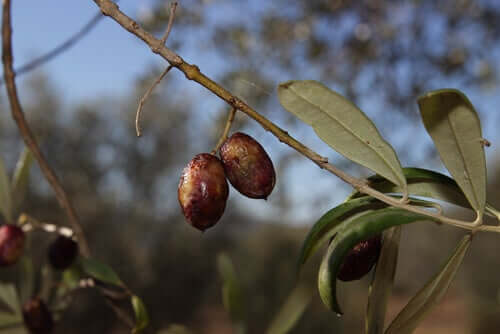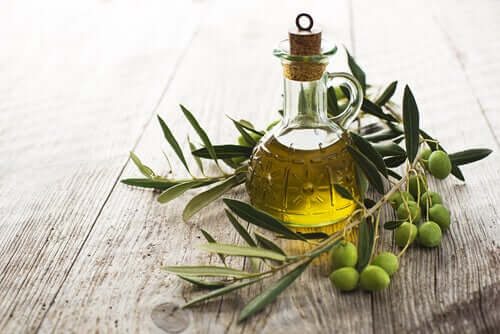The Antibiotic Properties of Olive Leaves for Dogs

The olive tree is an age-old tree. Its medicinal properties have been known for thousands of years. The extracts of olive leaves have some of the best natural antibiotic properties for dogs and even humans.
Medicinal properties of olives
The olive tree isn’t just a beloved plant because of its olive oil, famous for being a key part of the Mediterranean diet. Its leaves and bark also have lots of chemical compounds with medicinal properties.
Those properties include things like:
- Reducing blood pressure. A tea with olive leaves has a similar effect to high blood pressure medications. Because of their hypotensive, or vasodilating, properties, they can help to reduce your blood pressure.
- Reducing cholesterol levels. Olive leaf extract can help to bring down your cholesterol and triglyceride levels.
- Anti-inflammatory powers.
- Anti-platelet abilities. The properties of olives also make it a great way to help prevent strokes and heart attacks.
- Cancer prevention. You can also get oleuropein from olive leaf extract. It’s a compound that has been proven to help slow down the molecular processes involved in cancer.
- Diabetes treatment. Some people also use it to help treat diabetes. It has a positive effect on blood sugar levels in the body, for both humans and dogs.
- Antioxidants. It can slow down the aging process in the cells thanks to the antioxidant hydroxytyrosol, a compound that occurs naturally in olives.

Olive leaves as antibiotics for dogs
Another amazing property of olives is as an antibiotic. The phenol compounds in olives and their leaves can help fight against certain bacteria.
A simple liquid extract filtered out of olive leaves can help keep bacteria from growing for a while. You can also get that anti-bacterial effect from olive oil, which is a great reason to make it part of your diet.
How do you use olive leaves?
You can get the beneficial chemical compounds in olive from teas, extracts, and oils. One simple way to bring olive into your dog’s life is to make it part of its diet. Many dog foods nowadays come with a bit of olive oil in them for just this reason.
Olives don’t just have antibiotic compounds. The leaves and olives themselves are rich in vitamins, minerals, essential fatty acids, and antioxidants.
Depending on your dog’s weight and whether it’s a large or small breed, you can add about a half a teaspoon to a teaspoon of olive oil to its dry food. You could also add it to any canned wet food, or put it with treats and snacks.

Lots of dogs like this combination in their food. After all, it helps to moisten and add flavor to the dry pieces of kibble.
The best thing you can do, as always, is to talk to your vet and figure out how much is right for your dog. You can also have them help you track your dog’s health, because too much olive oil can also have laxative effects.
Dogs can also benefit from applying olive oil or extracts from olive leaves to their skin. They’re great as a moisturizer for paw pads and getting rid of parasites like ticks. But be careful how much you use. Too much could make your dog’s fur look greasy. After a while, its skin should start to look better and its fur should be softer, thicker, and shinier.
Remember that phytotherapy isn’t a true replacement for antibiotics
If your dog has some kind of infection, olive leaf extract can help to treat that. However, it can’t be a direct substitute for an antibiotic treatment that your vet would prescribe. Self-medication is dangerous. If your dog is sick, you need to get a diagnosis from a professional. From there, you can figure out how to approach treatment.
Other oils from things like coconut, argan, flax, salmon, and cod are also great for your dog’s health. They can help get rid of digestive and skin problems. You can also include these in your dog’s diet or use them on its skin, with things like shampoos.
There are lots of natural compounds out there that can act as antibiotics for dogs. Things like garlic, calendula, turmeric, and some forms of echinacea are all good examples of that. Give some of these a try and see what works best for your furry friend!
All cited sources were thoroughly reviewed by our team to ensure their quality, reliability, currency, and validity. The bibliography of this article was considered reliable and of academic or scientific accuracy.
- Ahmad Farooqi A, Fayyaz S, Silva AS, Sureda A, Nabavi SF, Mocan A, Nabavi SM Bishayee A. Oleuropein and Cancer Chemoprevention. Molecules. 2017 Apr 29;22(5).
- Maestro Durán, R.; León Cabello, R.; Ruiz-Gutiérrez, Valentina. Compuestos fenólicos del olivo (Olea europea), 1994.
- M Tránsito López Luengo. El olivo, vol. 25, num 11, 2006.